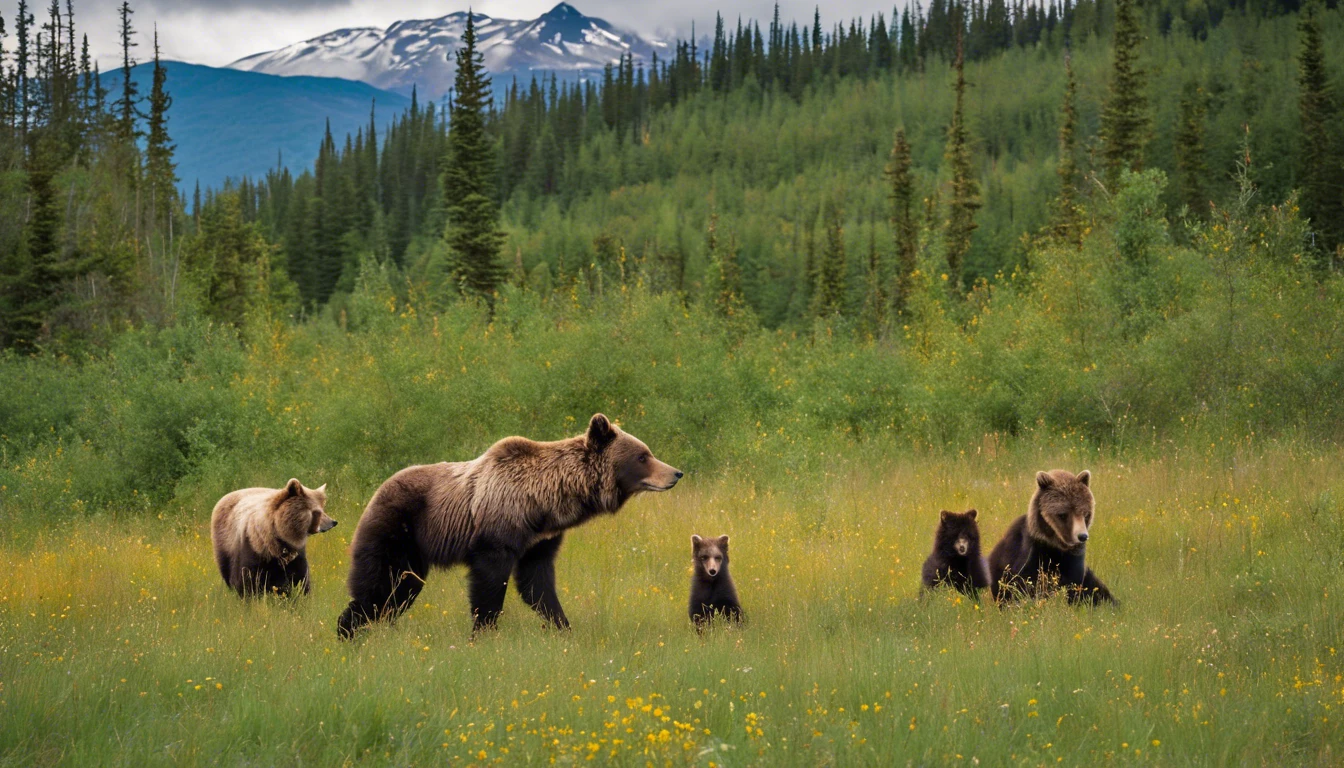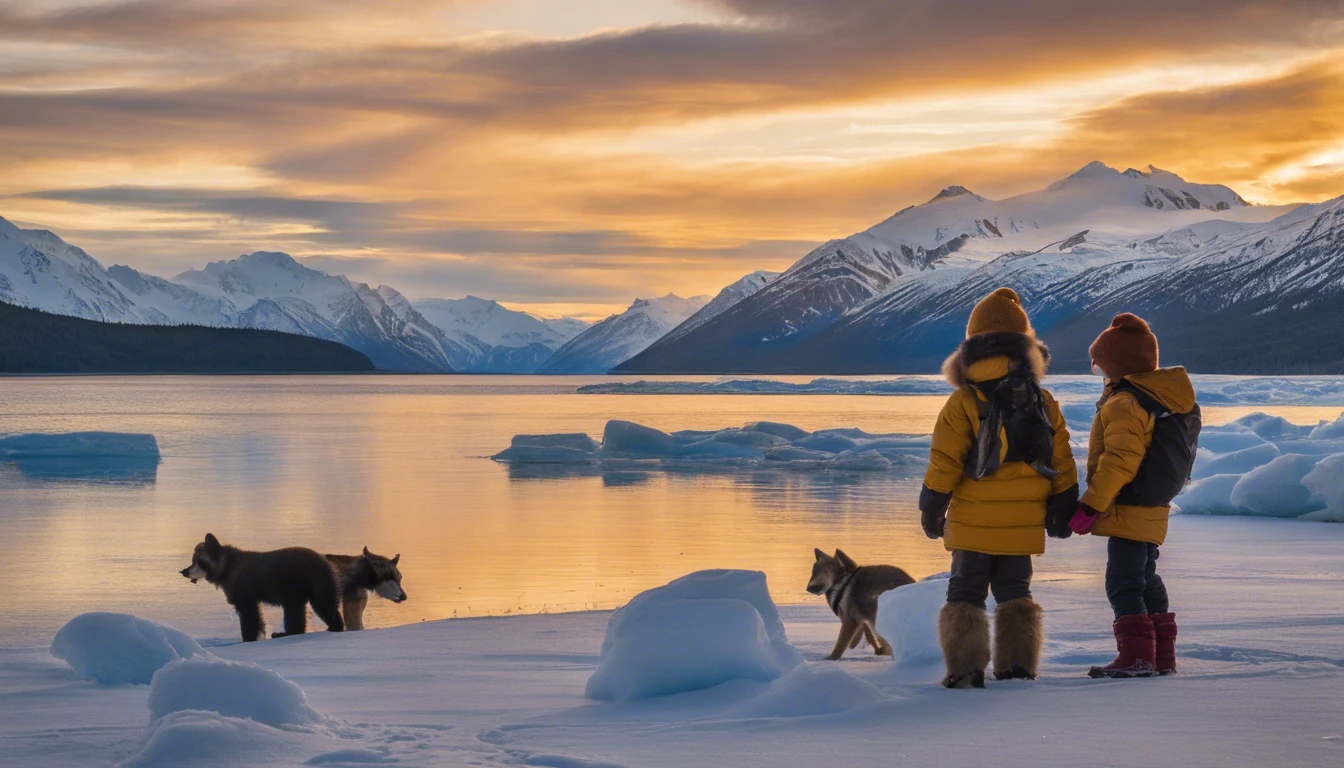Breathtaking Natural Beauty & Outdoor Adventures
Alaska, a land of pristine wilderness and awe-inspiring natural beauty, offers endless outdoor adventures that cater to every taste. From the rugged mountains of Hatcher Pass in the Talkeetna Mountains, with its stunning views and opportunities for hiking and camping, to the majestic Kenai Fjords National Park, where glaciers meet the ocean in a spectacular display of nature's power, Alaska is a playground for nature lovers.
The state's vast wilderness includes the remote Arctic National Wildlife Refuge, home to a diverse range of wildlife and outdoor activities, and Wrangell-St. Elias National Park, the largest national park in the U.S., known for its breathtaking mountains, glaciers, and opportunities for wildlife viewing.
For those seeking a blend of culture and nature, Kodiak Island offers a unique experience with its rich Russian and Native Alaskan heritage, alongside opportunities to see Kodiak bears, whales, and sea otters. Meanwhile, Anchorage provides a gateway to outdoor adventures like the Tony Knowles Coastal Trail, Earthquake Park, and the nearby Flat Top Mountain, all while offering the conveniences of a metropolitan city with a small-town feel.
Alaska's allure is not just anecdotal; its natural beauty and outdoor adventures are backed by impressive statistics. The state, known as “The Last Frontier,” is a premier destination for its vast wilderness, snow-capped mountains, and extensive coastline, including witnessing the Northern Lights and wildlife sightings like humpback whales and grizzlies in Denali National Park. It's the largest U.S. state with a diverse landscape that includes Denali, the highest peak in North America, and over 3 million lakes. Despite its small population of around 730,000, Alaska's tourism industry is significant, welcoming over 2.2 million visitors in 2019, a 2.2% increase from the previous year, generating over $4.5 billion and supporting over 50,000 jobs as detailed by Tourism Teacher. Cruise tourism is notable, with over 1.3 million passengers in 2019. Tourists are drawn by Alaska’s natural beauty, wildlife, adventure activities, rich Indigenous culture, and the chance to see the Northern Lights.
Whether you're drawn to the solitude of the backcountry or the camaraderie of a bustling fishing town, Alaska's natural beauty and outdoor adventures are guaranteed to leave a lasting impression. Embrace the opportunity to explore the untouched landscapes, majestic wildlife, and the unique culture of America's Last Frontier.
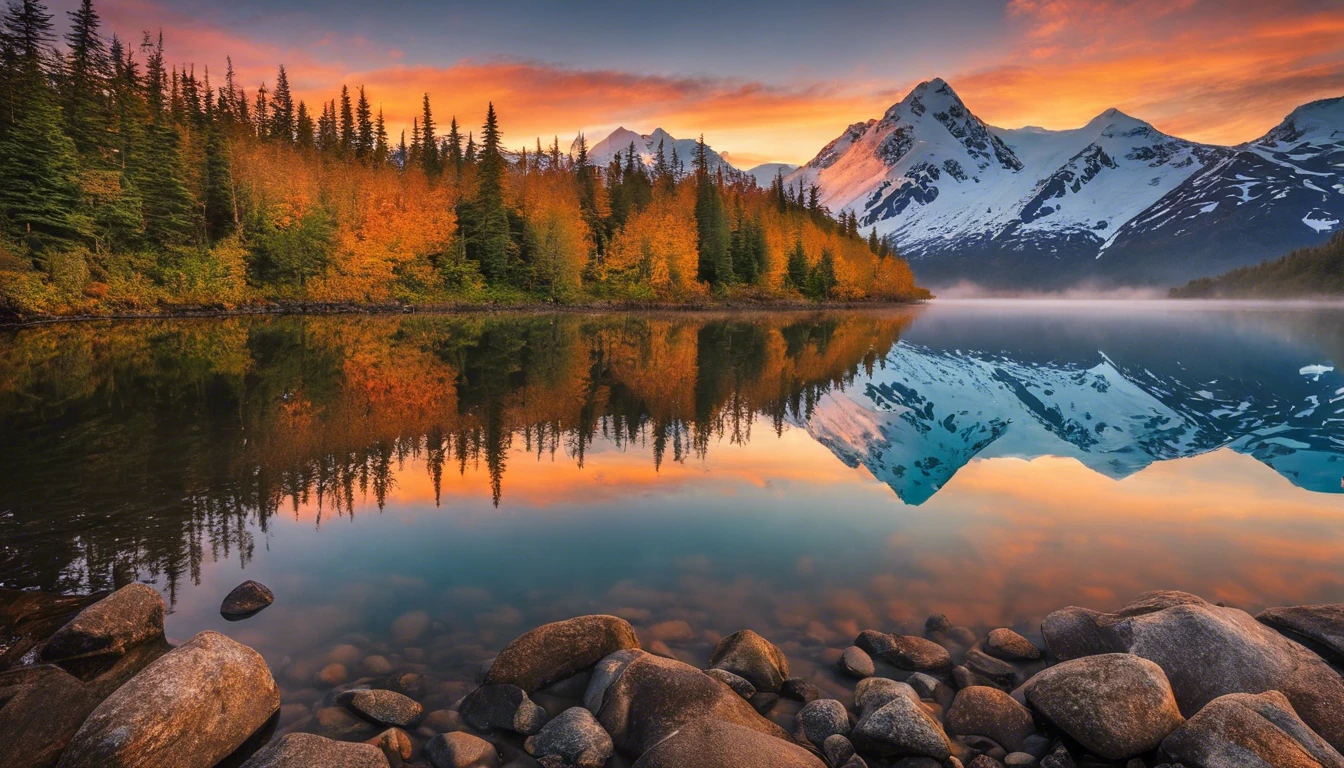
A Healthy, Active Lifestyle
Living in Alaska promotes a lifestyle that is both healthy and active, thanks to its vast landscapes and unique climate. Residents have the opportunity to engage in a variety of outdoor activities throughout the year, fostering both physical and mental well-being.
The Alaska Department of Health highlights the importance of maintaining a healthy lifestyle to combat the state's challenges, including a higher-than-average death rate from cancer. Despite these challenges, the breathtaking landscapes of Alaska provide an unparalleled backdrop for maintaining physical health.
In the heart of Alaska, the interior's arctic desert climate, with its dry and cold winters, provides a perfect backdrop for winter sports such as cross-country skiing, dog sledding, and ice fishing. Despite the cold, the dryness of the air makes outdoor activities more enjoyable than one might expect. The long, sunlit days of summer, on the other hand, are ideal for hiking, kayaking, and camping in the state's endless wilderness areas. These activities not only contribute to a healthy lifestyle but also allow individuals to connect with nature on a profound level.
The Tongass National Forest, the largest rainforest in North America, located in Southeast Alaska, offers mild winters and wet summers, creating a unique environment for rainforest hikes, fishing, and wildlife viewing. This region, with its lush landscapes and abundant wildlife, highlights the diversity of Alaska's natural beauty and the wide range of outdoor activities available to those seeking a healthy lifestyle.
Anchorage, Alaska's largest city, combines the conveniences of urban living with easy access to the great outdoors. It's a place where residents can enjoy the benefits of city life, including modern health facilities and fitness centers, while being just a short distance away from mountain trails and wilderness areas. The city is known for its moose population, which adds a unique Alaskan touch to the urban landscape, especially in winter.
However, it's important to acknowledge the health challenges faced by Alaskans. According to a report by USA Facts, two-thirds of Alaska adults are overweight or obese, and nearly a third have high blood pressure. Furthermore, lifestyle factors such as a lack of physical activity and smoking contribute to these conditions. In response, the Alaska Department of Health and Social Services has initiated programs to promote positive lifestyle changes, emphasizing the importance of regular health screenings and physical activity.
Alaska's lifestyle is a testament to the benefits of combining physical activity with a deep connection to the natural world. It's a place where the challenges of the environment become opportunities for growth, health, and adventure. Whether it's through engaging in the state's many outdoor activities, embracing the community's supportive spirit, or simply enjoying the breathtaking scenery, living in Alaska offers a unique path to a healthy and active life.

Community and Independence
Alaska is a place where the ethos of independence intertwines seamlessly with a strong sense of community. The unique cultural landscape of Alaska is shaped by its indigenous peoples, such as the Iñupiat, Yupik, and Aleut, alongside a rich history of Russian and American influences. This blend has created a society where self-reliance is highly valued, yet there's an undeniable willingness among Alaskans to support their neighbors in times of need.
Alaska is home to one of the largest indigenous populations in the United States, with over 120,000 people, making up 17 percent of the state's population in 2010, a higher proportion than in any other state. The Alaska Native population comprises many distinct cultures and possesses lands in every region of Alaska. Despite significant declines following early European contact in the 18th and 19th centuries, the Native population has seen substantial growth over the past century, a trend that is expected to continue.
The state's vast and challenging environment fosters a culture where survival skills and respect for nature are paramount. This is evident in the common use of terms like "breakup boots" referring to the footwear of choice during the spring thaw, and "the Slope," which relates to the North Slope oil fields. Such phrases underscore the distinctive lifestyle and priorities of Alaskans, where practicality often trumps external fashion trends.
In communities across Alaska, there's a prevalent preference for wild meat and informal gatherings, showcasing a general disregard for how things are done outside the Last Frontier. This preference extends to a broader cultural attitude that values capability over appearance, and a subtle pride in being distinctly Alaskan. The state's culture is marked by a strong sense of community, respect for elders, and a communal responsibility that often manifests in practical support for neighbors while maintaining a degree of personal solitude.
Anchorage, as Alaska's population center, is a melting pot of cultural diversity, reflecting over 50 Asian languages spoken in one high school alone. The city's multicultural population values food and culture, contributing to a vibrant community life that is less religious and conservative compared to much of the U.S. Despite the cold and dark, Anchorage residents focus on personal life, embracing a unique blend of sarcasm and laid-back attitudes without judging others. This openness and diversity are distinctive aspects of Alaskan culture, particularly in Anchorage, fostering an environment where discussions on race and social issues are welcomed.
The rivalry between Fairbanks and Anchorage further illustrates the regionalized nature of Alaska, with each community showcasing its own identity and cultural nuances. Whether it's Fairbanks residents referring to Anchorage as "Los Anchorage" or Anchorage citizens dubbing Fairbanks as "Squarebanks," these friendly jibes highlight the diverse and vibrant tapestry that makes up Alaska's cultural identity.
In Alaska, the blend of independence and community support, along with a profound connection to the natural world, creates a unique cultural landscape where individuals thrive amidst the challenges and beauty of the Last Frontier.
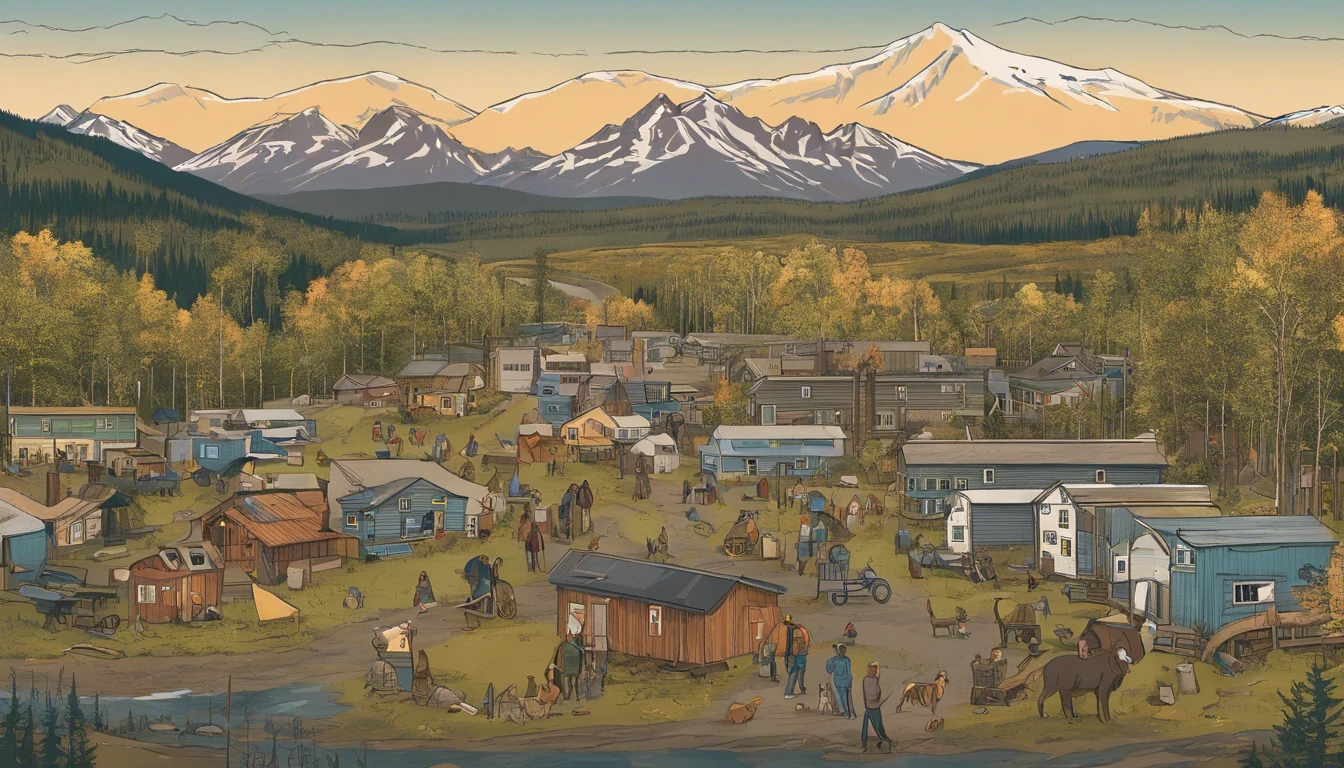
Education and Character Development
Alaska's educational landscape is as vast and diverse as its natural one, offering unique opportunities for growth and learning that extend far beyond the traditional classroom setting. The state's exceptional environment and community ethos significantly enrich the educational experiences of its youth, fostering qualities like independence, resourcefulness, and a profound connection with nature.
The Performance Evaluation for Alaska's Schools (PEAKS) assessment, a key component of the state's educational evaluation system, is administered annually to students in grades 3 through 9 in English Language Arts (ELA) and mathematics. This assessment is designed to measure students' grasp of Alaska's ELA and Mathematics Standards, aiming to ensure that all students meet the state's rigorous academic expectations.
Despite the state's commitment to educational excellence, Alaska faces notable challenges. It ranks at or near the bottom in reading and math scores compared to other states, a concern highlighted in 2020 reports. This underscores the urgent need for targeted interventions and innovative strategies to bridge these achievement gaps.
In response to the COVID-19 pandemic, the Alaska Department of Education & Early Development (DEED), in collaboration with the Department of Health and Social Services (DHSS), developed Smart Start 2020, a comprehensive guide for safely reopening schools. This plan employs a tiered approach, tailored to varying pandemic risk levels, to ensure continuity of learning while prioritizing the health and safety of students and staff.
The state has also taken strides to improve educational outcomes through Alaska's Education Challenge, a statewide initiative launched in 2017. This ambitious effort seeks to enhance the quality of education for every student, fostering a shared vision for excellence in education. Central to this initiative is the commitment to address educational disparities and elevate student achievement across Alaska.
Moreover, Alaska's commitment to high academic standards is evident in the updated standards published in 2012. These standards reflect the collaborative efforts of Alaskan educators and national experts, aiming to prepare students for success in a rapidly changing world. The Annual Report Cards to the Public, mandated by Alaska Statute 14.03.120, further demonstrate the state's dedication to transparency and accountability in public education, providing performance results and updates on the progress of public education in Alaska.
In Alaska, where the environment is as challenging as it is invigorating, the education system plays a pivotal role not only in academic preparation but also in shaping resilient, adaptable, and well-rounded individuals. The state's expansive wilderness and vibrant community life offer a unique backdrop that enhances formal education, making Alaska an extraordinary place for nurturing the next generation.
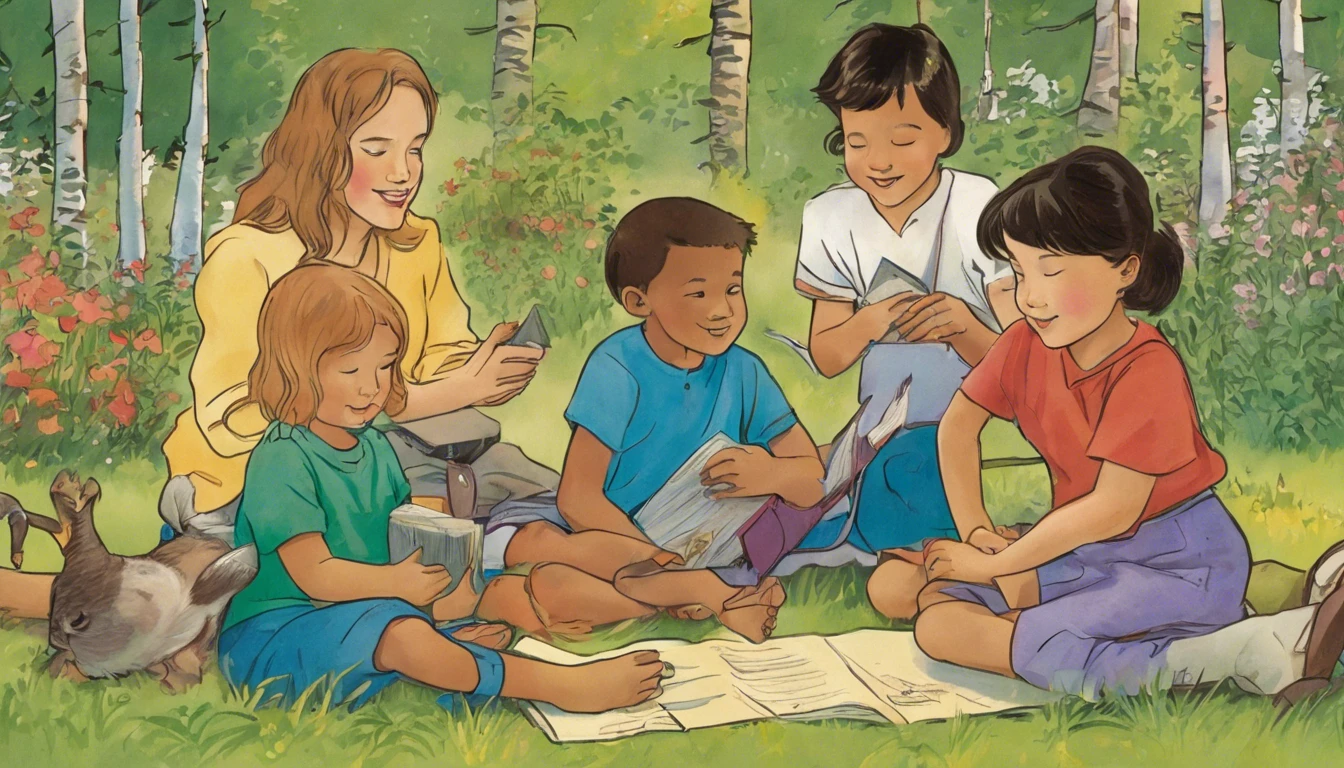
Considerations for Families
When contemplating a move to Alaska, families have unique considerations, especially when it comes to healthcare access and services. The state's vast landscapes and remote locations present both challenges and innovative solutions for accessing medical care.
In rural Alaska, healthcare is often facilitated through local health clinics found in most small towns and villages. These are typically staffed by Rural Health Aides in the smallest communities and Nurse Practitioners or Physician’s Assistants in larger towns. For more specialized consultations, telemedicine has become a crucial link with doctors in more populous centers, showcasing Alaska's resilience and adaptability in overcoming geographical barriers to healthcare. For emergency situations, many residents have medivac or life flight insurance, ensuring they can be quickly transported to hospitals, reflecting the state's proactive approach to healthcare accessibility in remote areas.
Alaska's healthcare system was ranked #30 in the 2022 State Health System Performance Scorecard. Key statistics include 14% uninsured adults, a mortality rate amenable to healthcare of 74 deaths per 100,000 population, and 129 potentially avoidable ED visits per 1,000 Medicare beneficiaries aged 65 and older. Access to healthcare indicators show a mix of values compared to the U.S. average across various measures, such as Behavioral Risk Factor Surveillance System (BRFSS) and National Survey on Drug Use and Health (NSDUH) results. The state's key demographics include a total population of 696K, with a median household income of $79.5K, and 22% living below 200% of the Federal Poverty Level (FPL). The racial composition is predominantly White (57%), with 13% American Indian or Alaska Native, and smaller percentages of other races and ethnicities. More on Alaska's healthcare statistics.
The healthcare sector in Alaska, valued at $7.5 billion and employing nearly 39,000 Alaskans, has shown considerable growth over the last 20 years, making it the state's largest private-sector employer. As of 2018, healthcare employment rose to 38,500, marking a 38% increase over a decade. Providence Health & Services is noted as the largest private employer. Healthcare professionals in Alaska are the highest paid in the U.S., with average annual salaries of $98,020. Specialized positions like pediatricians and obstetricians earn upwards of $260,000, and even health technologists and technicians have average earnings of $62,200. Despite high wages, Alaska faces a healthcare worker shortage, particularly in rural areas, which has led to innovative recruitment of non-traditional healthcare workers. The industry's growth is supported by continuous construction and renovation of healthcare facilities across various regions, including Soldotna, Anchorage, Palmer, and Southeast Alaska. This expansion has also positively impacted the real estate market around healthcare facilities. Alaska's unique geographic challenges necessitate innovative healthcare delivery solutions, including a network of 14 Critical Access Hospitals, 32 Federally-Qualified Health Centers, and extensive use of telehealth services. Tribal Health Organizations manage the largest healthcare network in Alaska, serving all 228 federally-recognized tribes. The state is preparing to support an aging population, with projections indicating a significant increase in residents over 65 by 2042, emphasizing the continued importance of healthcare as a growth sector in Alaska's economy. Learn more about Alaska's healthcare industry.
The discussion around healthcare in Alaska also touches on broader national issues, such as the challenges of establishing universal healthcare. Despite Alaska's significant oil revenues, there's been resistance to using these funds for universal healthcare, with obstacles including opposition from insurance and pharmaceutical industries, the comfort some find in employer-provided insurance, and political and ideological beliefs that such a system contradicts American values. This complex debate highlights the unique intersection of economics, politics, and healthcare in Alaska and the United States at large.
For families seeking medical billing services within Alaska, it's advised to seek recommendations from local healthcare professionals, practice administrators, or through professional organizations like the Alaska State Medical Association (ASMA) or the Medical Group Management Association (MGMA) Alaska Chapter. Notable services such as Alaskan Medical Billing, Denali Billing Services, and Arctic Revenue Solutions come highly recommended for their expertise and understanding of Alaska's specific healthcare needs. Evaluating a medical billing service's credentials, experience, customer service, and cost structure is crucial for families to ensure they receive the best possible support in navigating Alaska's healthcare system.
Alaska's unique challenges in healthcare access and services are met with innovative solutions and a community's resilience to ensure families can thrive in this beautiful and rugged frontier.
